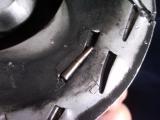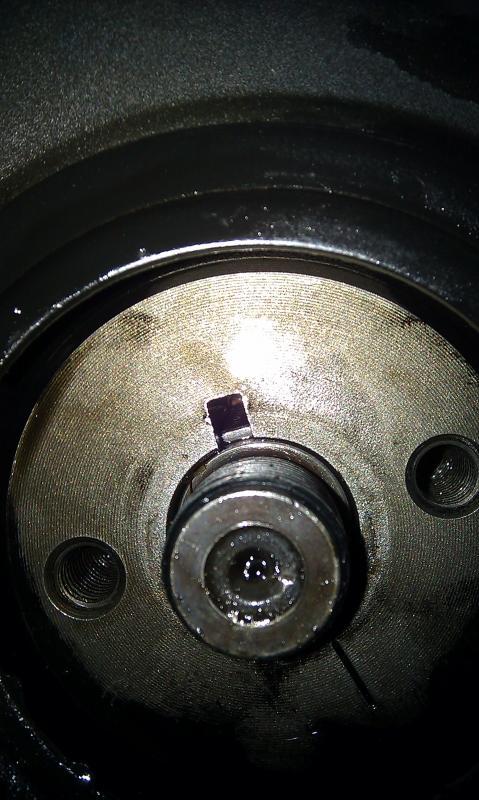Search the Community
Showing results for tags 'timing'.
-
So I thought I would pose a question today, since this is something I’ve been dealing with all day. What exactly does the offset key do in regards to timing? I’ve searched the inter webs and I can’t find anything more than a generic, “It works with timing the pump”, or “The key has to be calibrated to each pump”. What does it do? Is there a hidden ignition pickup or sensor in the gear cover that reads the key? Reason I’m asking is because my key is crushed (My F-up). I think at some point between 1998.5-2002, Dodge took either the crank or cam sensor out of the truck when built. I have an 01, and it only has one of those sensors. I’m wondering if the key is irrelevant on those later trucks not equipped with the cam/crank sensor (still can’t remember which one I have). Any clarity on what the hell that key affects regarding timing would be much appreciated.
- 13 replies
-
- 1
-

-
Hey guys, need a lil help here. So i had to do some serious tear down of the truck to get to my tappet cover. I found that it was leaking back when i did my rear main crank seal last time i was underneath the truck. Needless to say to get to the tappet cover you have to pull the injection pump and lines 1,2, and 4 so that you can get the vp44 out of the way. I was very careful when i was removing the vp44 to make sure that I didnt drop the key down the timing cover. I aligned the key-way with the TDC mark on the top of the timing cover so that wouldnt happen. Removed the pump and went about my business. On re-installation i put the pump back in made sure everything was aligned and bolted the vp44 down they way you are supposed to. needless to say after I started it up i pop a p0216. I didn't move the gear around while it was disassembled either. Anybody have any ideas if I should pull the pump again and verify if things are lined up that way or should I go about pulling the timing cover to check and see whats going on? BTW this pump was good before I began the work. Any help would be appreciated.
- 2 replies
-
- vp44
- tappet cover
-
(and 1 more)
Tagged with:
-
Told you all I would make a movie so here it is. Timing is at around 16.5* and it was 18f this morning. As a reference, heres how it started with the stock 13.5* timing at -2f.
- 24 replies
-
- advance
- cold weather
-
(and 2 more)
Tagged with:
-
VP-44 Key Picture On my wifes truck I wanted to verifiy the key was... 1. In 2. The arrow pointed the right way 3. That the number matched the number on the pump I was able to use a 4MP Cannon camera on the closeup setting to capture this picture so we didnt have to use a mirror or scope. If you didn't know... the arrow points towards the pump. the number on the key matches the number stamped on the pump. You can't use another number key
- 1 reply
-
- diesel information
- injection pump
-
(and 1 more)
Tagged with:
-
Maybe some of you have read this page http://mopar.mopar1973man.com/cummins/general/2-cycle-oil/cetane/cetane.htm well I am going to prove it. Words don't always get the idea across and I want you all to see what happens when you vary the cetane. First off, cetane is the ignition quality of fuel and by that I mean it determines how long it takes the fuel to ignite when heated to it's autoignition point. The bigger the number, the shorter it takes to blow up. We can show this with math and crap, OR, we can show this with some extreme fuel choices. I think you all know motor oil does not ignite very well. On the other hand, power service will ignite quickly. Motor oil has a very low cetane, power service has a very high cetane. Now here is how the engine works with cetane. The piston comes up and has so much compression that it heats the air to a very high temperature, higher than the autoignition temperature of fuel (~450F). A little before top dead center, fuel is injected into the combustion chamber. This fuel absorbs the heat that is in the very hot air, and ignites. Cetane comes into play when the fuel ignites as I stated previously. So why is this so critical? Well the engine only has a limited amount of time to get the fuel to ignite. When they say the timing is 14 degrees before top dead center, they mean the fuel is injected 14 degrees crankshaft rotation before TDC. Obviously it would be a disadvantage for the fuel to ignite before TDC since it would be trying to push a piston down that is still trying to come up. RPM play a key role in this. The faster an engine is turning, the less time BTDC the engine has to get the fuel to ignite. This is why truck pullers advance their timing to degrees over 20, because they are revving so high that they need more time to get the fuel to burn, so they inject it in sooner. If your engine turns slower, say 1000RPM, your most efficient timing might be somewhere in the single digit degree range, because it has a lot of time before it gets to TDC. As the engine RPM goes up, timing needs to advance so that the engine will be injecting fuel at the perfect time, not too soon and not too late. The knocking is actually a sign that it is injecting too soon because it is igniting before TDC. When I advanced my timing, it would knock at idle, when I retarded it back to stock, it was back to being quiet. The p7100 trucks have static timing, so mine is always the same. I just showed how timing needs to change so p7100 trucks must be set for the best setting for most drivers. Retarded enough to start good, yet advanced enough to be efficient at cruising RPM. Now that you know about timing and cetane, I can explain why you see what you see in the video. My truck idles with the needle just scratching the line under 1000, on diesel fuel. So with cetane at 40 or whatever the summer fuel I get is, it ignites and provides the power for that rpm. When I changed over to the motor oil, my RPM dropped a lot. Motor oil contains the same amount of energy as diesel, if not more, so it would make sense that my rpm would go up, but that obviously doesn't happen. So what gives! Damn oil is worthless! No, the truth is that the oil has a very low cetane compared to diesel. So the delay is very long. So long that the oil ignites after the engine has reached and gone past TDC. The oil is only exploding on part of the power stroke because it took so long to ignite. In theory, if we advanced the timing a lot, we could get the RPM's back up. Now lets say you are running vegetable oil. Now your cetane is very high. It will knock more because it is igniting very soon. In this case it would be beneficial to retard timing. http-~~-//www.youtube.com/watch?v=fAmgB2sJlPg
Rate The Author
Please take the time and give the author a 1 to a 5-star rating for the information you have gained from anywhere on the website. All forum threads, articles, etc. If a members post is good information please don't forget to tell them "Thanks" or "Like"
Rate Us On Google
Please take the time and visit our Google Review page and give us a review of our services.
Tip Jar
If Mopar1973Man.Com has helped you with quick and timely information for your repair please consider tossing a tip in the Tip Jar




